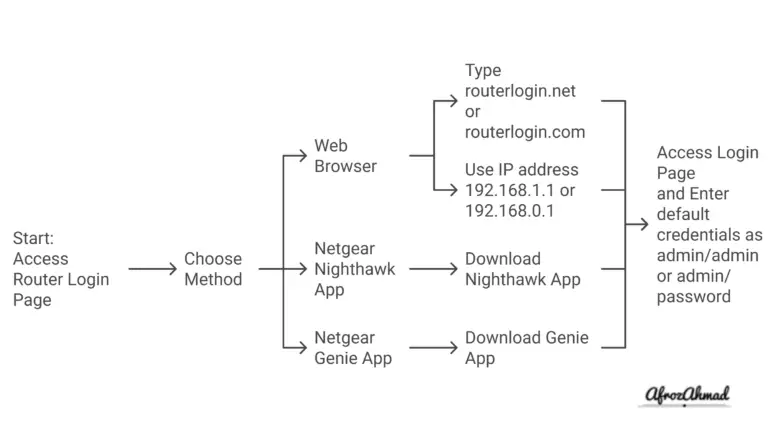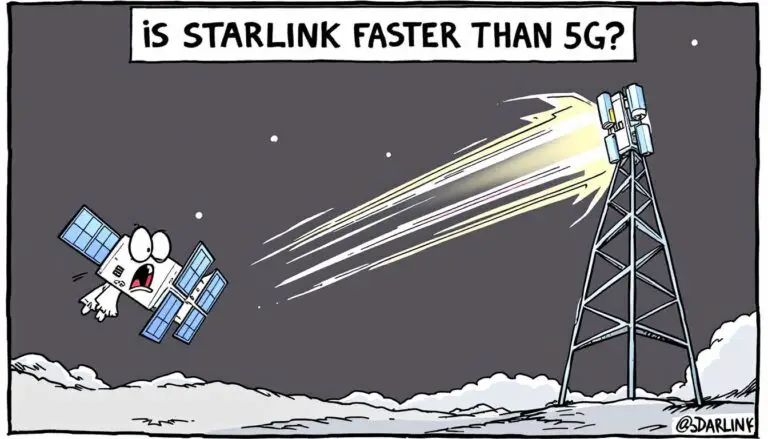CenturyLink Modem Blinking Blue signals that your device is trying to establish a network connection but can’t. Common causes range from loose cables and outdated firmware to CenturyLink network outages.
Fortunately, this problem is often solvable by checking cable connections and power cycling your modem. Our guide dives into detailed troubleshooting techniques and preventive measures to ensure your modem maintains a stable connection.
Key Takeaways
- 💡 A blinking blue light on a CenturyLink modem indicates it’s trying to establish a network connection but failing.
- 💡A continuous blinking blue light could indicate LOS (Loss of Service), which suggests communication problems between the modem and CenturyLink’s network
- 🔌 Common causes include loose cable connections, outdated firmware, and CenturyLink network outages.
- 🌡️ Overheating modems and excessive load from too many connected devices can also cause connectivity issues.
- 🔧 Troubleshooting steps involve checking cable connections, power cycling the modem, and updating firmware.
- 🔄 A factory reset might be necessary if other troubleshooting steps fail.
- 📞 Contacting CenturyLink Support can help diagnose and resolve issues beyond basic troubleshooting.
- 🛠️ Regular maintenance like updating firmware and checking cable connections can prevent future issues.
- 🚦 Set up CenturyLink alerts for network outages and maintenance to stay informed.
- 📊 Understanding modem light signals can aid in diagnosing connectivity problems.
- ⏳ Allow 10-15 minutes for the modem to establish connectivity after powering on before troubleshooting.

What a Blinking Blue Light on a CenturyLink Modem Indicates?
CenturyLink modems have a variety of status lights on the front to provide information about the connection state. These can include lights for power, internet connectivity, WiFi, and more.
The most important light to pay attention to is the broadband or DSL light. This shows whether your modem has established a connection with the CenturyLink network.
On many CenturyLink modems, when the broadband/DSL light is:
- Solid Green: Successfully connected to the CenturyLink network
- Blinking Blue: Searching for a connection
- Solid Blue: Connected but not activated
- Blinking Green: Connecting to the network
- Solid Red: Failed to connect
So when you see your CenturyLink modem blinking blue for an extended period, it means it is stuck searching for a network connection and failing to establish one.
If your modem continues blinking blue nonstop rather than turning solid blue or green, there is likely an underlying issue preventing it from syncing up.
See also: Decode Your CenturyLink Modem Lights – Status & Solutions
Why Does My CenturyLink Modem Keep Blinking Blue?
There are several potential reasons why your CenturyLink modem won’t stop blinking blue when trying to connect:
Loose Cable Connections
Faulty cabling is one of the most common reasons for modem connection issues. If either the DSL cable connected to the modem itself or the cable running from the wall jack to your property’s phone box are loose, it can prevent your modem from syncing up.
Outdated Firmware
Your modem requires up-to-date firmware to communicate properly on CenturyLink’s network infrastructure. If the modem firmware is outdated, it may fail to establish a steady connection.
CenturyLink Network Outage
Centurylink Service outages in your area can also lead to your modem endlessly blinking blue when searching for a signal from the CenturyLink network. Until the outage is resolved, your modem won’t be able to find the network and connect.
Overheated Modem
If your modem overheats due to poor ventilation or excessive demand, it can start acting irregularly and fail to maintain a steady network connection. This disruption often manifests as a blinking blue light.
Faulty Hardware
In some cases, there may be an underlying hardware fault with your modem or the in-home networking equipment it connects to. Damaged telephone wall sockets, splitters, filters or even a failing modem could lead to connectivity issues.
Authentication Failure
Your modem requires your CenturyLink account credentials to access the network. If these credentials become outdated or you change your account password without updating it on the modem, authentication errors can occur.
Excessive Load
If there are too many devices simultaneously drawing bandwidth via your modem, it can become overloaded. This prevents the modem from establishing a solid connection, indicated by the blinking blue light.
How to Fix a CenturyLink Modem That Keeps Blinking Blue
If your CenturyLink modem won’t stop blinking blue, there are a number of troubleshooting steps you can take:
1. Check Cable Connections
Inspect all cables connected to your CenturyLink modem. On the back of the device, ensure the DSL or phone cable is plugged in securely. Follow the cable to the telephone wall jack and confirm it hasn’t come loose.
If your in-home phone wiring uses a DSL filter, check the connection points there too. Faulty cables are often the issue, so this should be your first troubleshooting step.
2. Power Cycle the Modem
If the cables are all securely plugged in, power cycling your modem often helps clear up temporary glitches.
Unplug the power cable from the electrical outlet then disconnect the phone/DSL cable. With your modem fully disconnected, wait 60 seconds.
Carefully plug the power cable back into the outlet and then reconnect the phone/DSL cable.
This reset often prompts your modem to re-sync with the CenturyLink network, breaking out of a blinking blue cycle.
3. Check for CenturyLink Outages
Using your phone, verify there are no CenturyLink outages in your area currently disrupting service. If so, there’s nothing you can immediately do beyond waiting for CenturyLink to restore connectivity.
But if service issues have been resolved in your vicinity, your modem may now reconnect successfully after a power cycle.
4. Update Modem Firmware
Log into your modem’s administration interface and check if the installed firmware matches the latest available version for your model. If not, initiating a firmware update often alleviates connection problems caused by outdated code.
See also: 8 Best Modem Router Combos for CenturyLink – Fast and Reliable Connectivity
5. Factory Reset Your Modem
If all else fails, restoring your modem’s default factory settings often gets connectivity working again. This resets all customizations you’ve made but reinstalls the necessary software to communicate with CenturyLink’s infrastructure.
Follow your modem documentation to perform a factory reset, usually by locating the recessed reset button on the back and pressing it for 10-15 seconds using a paperclip.
6. Contact CenturyLink Support
The CenturyLink technical support team can run remote diagnostics tests on your connection, check for network issues in your area and potentially spot problems you can’t identify yourself.
If they determine the problem lies with your CenturyLink equipment or property lines, the support rep can schedule a technician to visit and replace any faulty infrastructure components.
Tips to Prevent CenturyLink Modem Blinking Blue Issues
While occasional blinking blue issues are understandable, you can take proactive measures to avoid regular modem connection problems:
- Periodically check all cables connecting your CenturyLink modem for damage and loose plugs. Replace suspect cables.
- Keep your modem firmware updated either manually or by enabling automatic updates.
- Clean around your modem regularly and ensure plenty of open space for ventilation.
- Connect devices directly to your modem when possible rather than introducing extra equipment like routers or switches.
- Set up CenturyLink alerts to notify you of outages and scheduled maintenance windows that may impact connectivity.
- Chat with CenturyLink support at the first sign of issues to have them diagnose problems before they worsen.
By closely monitoring your CenturyLink modem’s connection state and the various factors influencing it, you can minimize instances of it blinking blue indefinitely without establishing a steady link.
Conclusion
A blinking blue light on a CenturyLink modem indicates connection issues, often due to faulty cables or outdated firmware. Check your equipment and reset the modem to resolve this. If problems persist, contact CenturyLink’s support for technical assistance. Regularly monitor your modem’s status to maintain a stable internet connection.
Frequently Asked Questions – FAQs
Why is there a blue light on modem but no internet Centurylink?
A blue light on your CenturyLink modem typically indicates connectivity status, but if there’s no internet, it could signal a communication issue with CenturyLink’s network. If the blue light is blinking, it may imply a loss of service (LOS) problem, indicating trouble in the modem’s communication with CenturyLink’s network.
Why does my CenturyLink modem keep blinking blue then green?
A modem that repeatedly blinks between blue and green is struggling to properly sync up with the CenturyLink network. There may be wireless interference, line noise or other issues impacting the stability of the connection.
How long should I wait for modem blue light?
In general, allow your CenturyLink modem 10-15 minutes to fully boot up and establish connectivity after being powered on. If the blue light continues blinking past that point, proceed with troubleshooting the connection.
What does blinking blue light mean on CenturyLink modem?
A blinking blue light means your CenturyLink modem is searching for an internet connection but failing to connect successfully and activate service. Something is obstructing it from linking up with the CenturyLink network infrastructure.
Why does my Zyxel modem keep blinking blue?
For Zyxel modems provided by CenturyLink, a blinking blue activity light persisting for more than 10 minutes often means disconnection from the internet. Zyxel models are more prone to stability issues if firmware is not kept updated.
How do I get my CenturyLink modem to stop blinking blue?
To stop your CenturyLink modem blinking blue indefinitely, methodically work through checks of the modem cables, power cycling the device, updating firmware, factory reset if necessary, and contacting tech support. This should identify and resolve the underlying problem.
- How to Configure a Secure Site-to-Site VPN on Cisco Firepower Complete Guide - December 3, 2025
- Jobs for Network Engineers: Roles, Skills & Pay - December 3, 2025
- How to Change WiFi Password on Any Router : The Last Guide You Need - December 1, 2025



